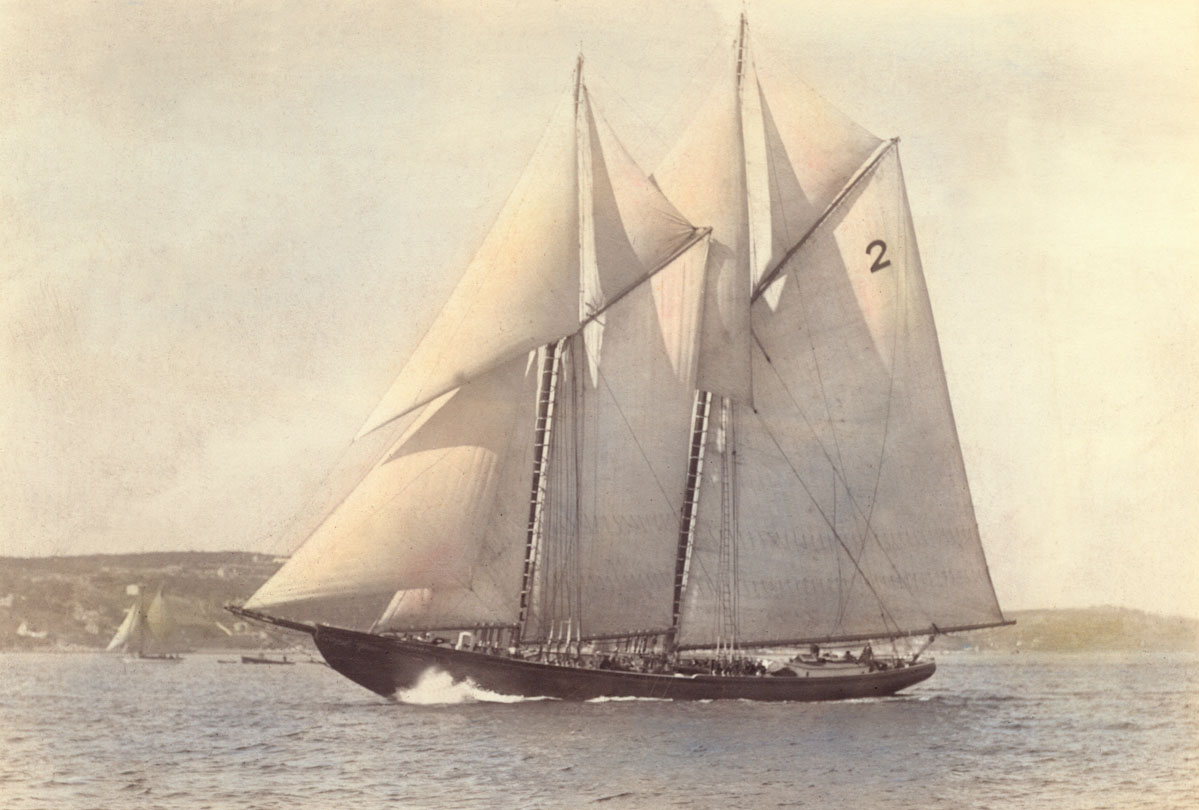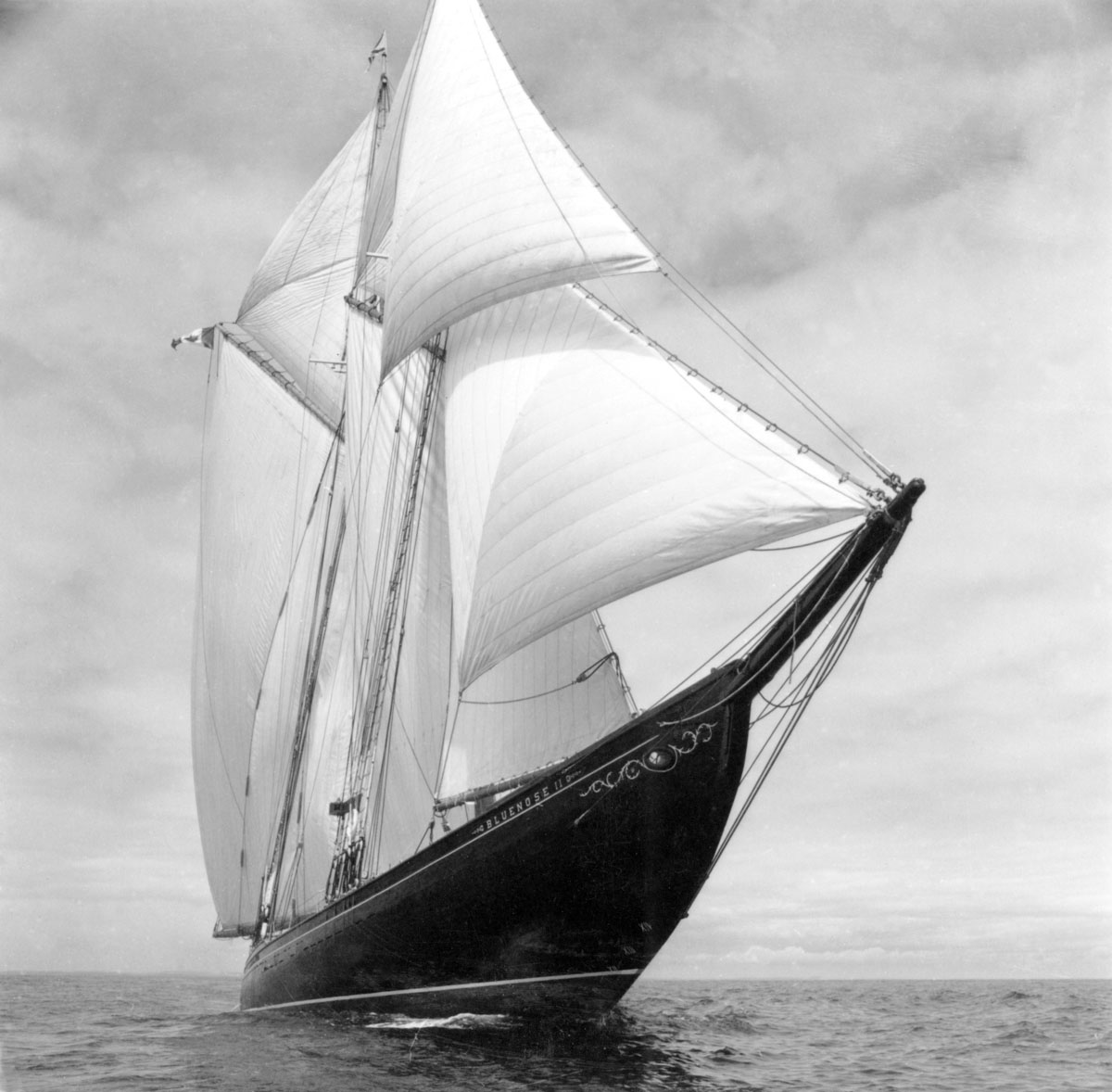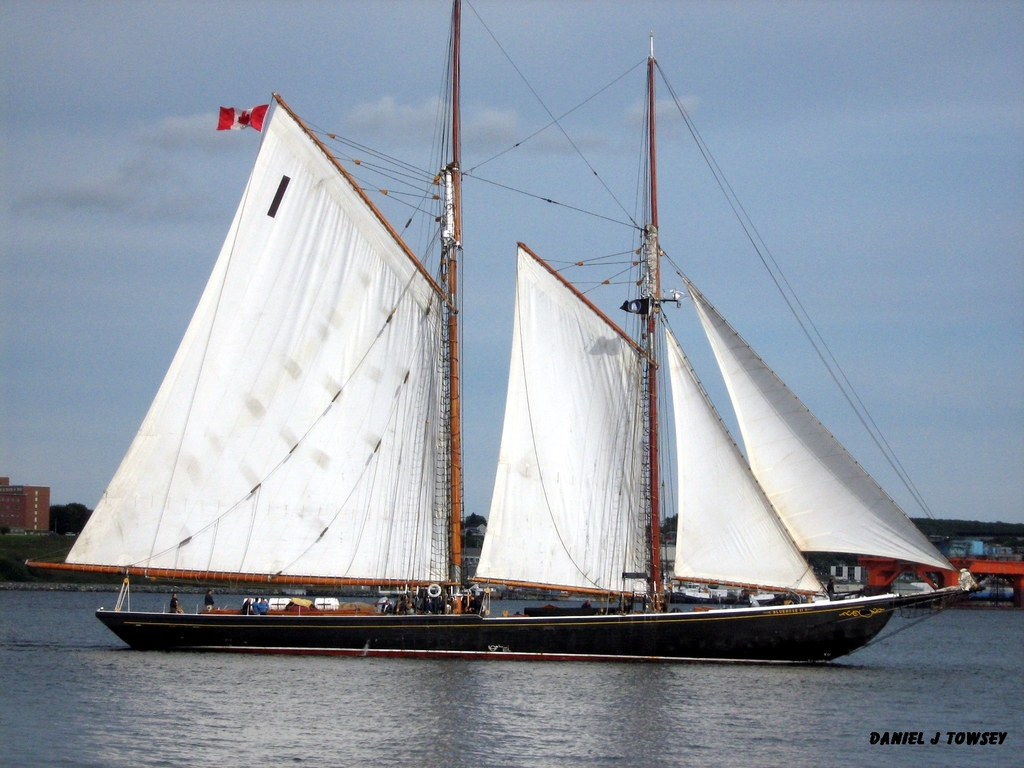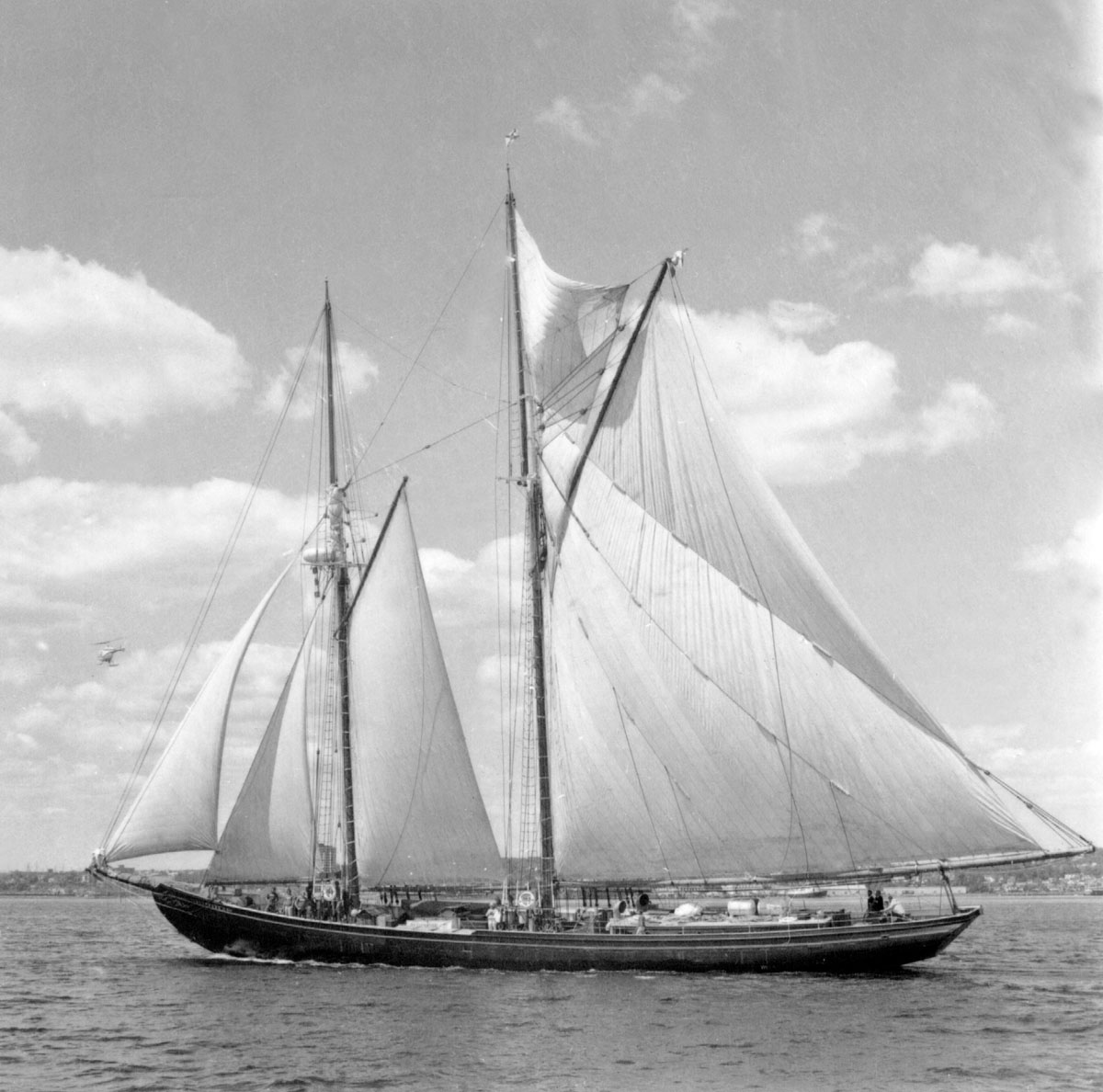Bluenose
The Bluenose is a famous Canadian schooner and was the fastest run by fishermen sailing ship.
History
The Bluenose was launched on March 26, 1921 at the shipyard Smith & Rhuland in Lunenburg ( Nova Scotia ) as a fishing boat from the deck. She was rigged as a gaff schooner and then possessed with 386 m², the largest mainsail in the world. The Bluenose was already at the 121 Smith & Rhuland built ship, but the first, which had been previously designed on the drawing board and to which there were detailed plans before construction begins. The designer WJ Roue had drawn these plans meticulously. The yard people thought nothing of it. Had they not already built 120 ships, without having to mingle with so much paper. Despite the new procedure, a saver with very good sailing characteristics, which should be to the National Shrine of Canada was formed.
According to legend, fishermen from Nova Scotia who have been exposed in their trips to the " Grand Banks " very cold, were called blue noses. This designation titled eventually the entire population of the province. Therefore, probably derives its name Bluenose ship.
During use when fishing for cod off Newfoundland it was soon the exceptional speed and maneuverability of the ship. Full of pride and enthusiasm took his crew under Captain Angus Walters each year on " Fisherman 's Cup ", an Regatta for fishing boats, traditionally among the fishermen of the cities Lunenburg ( Nova Scotia ) and Gloucester ( Massachusetts) was held. The Bluenose was here 17 years in a row undefeated.
1938, when the large fishing schooner were displaced by motorized trawlers, Walters had to sell the ship. When the Second World War, the masts were cut and a motor was installed. Subsequently, the Bluenose was used as a freighter between Canada and the Caribbean until it expired on January 28, 1946 in front of Haiti on a reef and sank.
On January 8, 1929 Canadian 50 - cent stamp was issued with the picture of the Bluenose. It just over 1 million of these stamps were printed and each still existing today has a value of about CAN $ 700 The image of the Bluenose is embossed on the Canadian 10 cent piece since 1937. It also adorns the license plate of Nova Scotia.
Bluenose II
The Oland & Sons Brewery in Halifax ( Nova Scotia ), introduced in the early sixties together the money to make build a full-scale replica of the Bluenose for the construction cost of $ 300,000. The ship should serve mainly as an advertisement for the brewed from Oland & Sons " Schooner Beer". The Bluenose II was in July 1963 by the stack and differs only in interior design from the original. In place of the holds partly luxury cabins were built. Furthermore, the new Bluenose additionally received a diesel engine. In 1971 she was sold for $ 1 to the government of Nova Scotia and has not only a tourist attraction, but especially landmark of the province.
Joan Roue, a great-granddaughter of the Bluenose - constructors WJ Roue, planned from 2006, another replica Bluenose III on the grounds that the Bluenose II was no longer seaworthy and therefore their task could no longer perceive as an ambassador for the province. The provincial government of Nova Scotia but it prohibited the use of the name, as the naming rights would be in the government. In addition, therefore, a new building, the Bluenose II was still seaworthy and not necessary. Then in May 2009, it came with a new provincial government to an agreement. The following year, the Bluenose II was cannibalized and then completely rebuilt. The launch of the new building took place on 29 September 2012. Though few parts ( masts and engine ) to be reused, the project officially regarded as repair and the ship is still the name Bluenose II
- Displacement: 258 t
- LOA: 49 meters
- Waterline length: 34 meters
- Width: 8 meters
- Draught: 5 meters
- Mainmast height: 38 meters
- Foremast height: 36 meters
- Total sail area: 1036 m²
- Mainsail area: 386 m²










